Stone Marshall's Blog, page 125
December 6, 2017
12 Days of ‘Minecraft’ Celebration Gives You Free Gifts Daily
Minecraft [$6.99] is getting ready to celebrate the holidays by giving free stuff to everyone. Starting December 21st and for 12 days after that, Minecraft will have a free present for you every day on the Minecraft Marketplace. The first present will be a Noxcrew offering called Ready Sled Go!, a mountainous sled slalom perfect for the holidays and great for taking on your friends. Mojang will advertise the presents on Twitter, so either keep an eye on that or just jump into Minecraft once a day to make sure you grab your free present. Free stuff’s great after all, so why leave it on the table?
Subscribe to the TouchArcade YouTube channel
If you’re looking for Minecraft-related presents or stocking stuffers, Mojang’s got you covered. Head over here to find all kinds of Minecraft presents, ranging from LEGO Minecraft sets, clothing, toys, posters, and all kinds of other items. When I see the list, I’m reminded of how big Minecraft is right now and how tiny it was when it started. And it’s still growing even after all these years. Well, enjoy your Minecraft holidays everyone.
12 Days of ‘Minecraft’ Celebration Gives You Free Gifts Daily
Giant ‘Minecraft’ graphics upgrade delayed to 2018
The Minecraft team had a bunch of news at their MineCon Earth convention, but the biggest news may be what’s not happening. Mojang and Microsoft have delayed the launches of both the Super Duper Graphics Pack and cross-platform Switch multiplayer to sometime in 2018. They’re not elaborating on the reasons behind the delay, but in both cases the features simply aren’t finished. More information on the graphics delay is coming “soon,” according to the creators.
Instead, the biggest improvement (beyond the Better Together release) is The Update Acquatic, which refines underwater adventures. There are new water physics (such as buoyancy), dolphins, coral and a water-appropriate weapon (the trident). There’s no release date just yet.
This certainly isn’t going to trigger a crisis for Minecraft players, but it does suggest that the graphics pack and Switch update were more than a little ambitious. It’s going to take a while for the world-building game to grow significantly beyond its roots.
December 5, 2017
‘Minecraft’ now livestreams building sessions directly to Mixer
A large part of Minecraft‘s allure is showing off your work. And now, it should be relatively easy to do that in real time. Mojang has released an update that lets you livestream directly to Microsoft Mixer (its parent company’s service, naturally) from within the game on Android devices, Windows 10 PCs and Xbox One consoles. If you’ve just finished recreating an entire country, you can take people on a live tour without starting a broadcast in a separate app or service first. And your audience doesn’t have to simply watch, either.
Mixer support also lets you make aspects of your Minecraft session interactive. Viewers can vote on spawning objects (including enemies) or even change the environmental conditions. They can turn day into night to see whether you’ll survive the trip back to safety, for instance. If you’ve ever broadcast a Minecraft stream and thought it was too predictable, this could add just the right amount of chaos.
The feature isn’t available in other versions of Minecraft just yet. A mod to bring it to the classic Java-based game is coming later in 2017. Even so, this promises to make the world-building game a more social experience, whether or not your friends are ready to play.
‘Minecraft’ now livestreams building sessions directly to Mixer
How Minecraft is becoming the foundation of a generation’s computer science education
Like many adults, Benjamin Kelly didn’t initially get the global Minecraft phenomenon, which has seen millions upon millions of kids investing endless hours exploring and creating within a blocky virtual world. Eventually he came around.
“I consider myself a late adopter,” says Kelly, who teaches technology at Caledonia Regional High School in New Brunswick. “But the students’ passion for the game was unyielding. I adopted Minecraft mainly because of that.”
By “adopted” he means he not only began playing it himself but also brought the game into his classroom. In addition to the 120 million-plus copies of the consumer-oriented version that have been sold since the Swedish-made mining game launched in 2011, Microsoft Corp. has sold more than 2 million Minecraft: Education Edition licenses specially designed to help kids learn to code.
Once he started poking around the game he began to see its educational potential. “It offers community,” he explains. “Minecraft is so popular it’s a culture. And by adding the recent powerful coding connections to the game Microsoft has created the ideal computer science education environment.”
Minecraft: Education Edition allows kids to command an agent within the game using computer code, sending it off to perform actions such as mining, harvesting, or building while the player continues doing whatever he or she likes. It’s designed to provide a familiar and accessible environment in which to introduce kids to some of the core concepts of computer science while keeping things fun and creative.
“I’ve seen examples where coding has caused the agent to build entire cities with random building heights all while the student continues to explore the game,” says Kelly.
Once he began using Minecraft in his classroom there was no turning back. Kelly went on to become a Microsoft Innovative Educator Expert and a Global Minecraft Mentor. He was recently named New Brunswick’s Inspirational STEM Teacher of the Year for 2017.
“Minecraft may be the single best educational tool available to support inclusion, universal design for learning, a wide variety of curriculum, and, most importantly, 21st century skills and competencies needed for successful lives and careers,” he says.
Kelly is just one of thousands of teachers now using Minecraft: Education Edition, and he’ll putting it to work again this week as part of the Hour of Code, a series of more than 100,000 teacher-planned educational events taking place in over 180 countries, with 3,000-plus events registered in Canada alone. Educators can choose from hundreds of ready-made tutorials sorted by grade and topics, many with prepared teacher notes. The student-led Minecraft module is, unsurprisingly, among the most popular of these programs.
Cam Smith, a spokesperson for Microsoft in Education Canada who has spent his entire career leveraging technology as a teaching aid (he built his first computer when he was 15), isn’t surprised that kids gravitate towards Minecraft as a portal to learning about computer science. He says nearly 70 million people have used Minecraft tutorials to understand the basics of coding.
“Minecraft is a great first step into coding,” says Smith. “It’s an open sandbox environment that is already beloved by students of all ages, genders, and backgrounds around the world. It’s a powerful validation that coding can be a truly creative pursuit for students.”
But are kids actually learning anything by playing Minecraft in the classroom? Smith is convinced they are.
“I’ve seen first-hand the power of how a gamified learning approach to coding ignites curiosity and passion within students,” he explains. “I’ve spoken to educators and have seen students learn to code using Minecraft in classrooms across the country. Complimentary to learning to code, Minecraft: Education Edition helps kids with teamwork by building worlds together.”
Smith’s job has given him opportunity to see how Minecraft not only helps students learn about computer science, but also geography and architecture as kids recreate real world replicas of schools, provinces, and cities. He even once observed students building a river in Minecraft to study fish conservation.
And he’s looked on, satisfied, as Minecraft has nudged quiet students out of their shells. “I’ve seen Minecraft: Education Edition be an incredible tool for students to stand out where they might not be as vocal in the classroom,” he says. “Their work shines through building confidence and an interest in STEM learning.”
As a teacher, Kelly has seen these sorts of occurrences first-hand, too. He believes that Canadian universities are now being flooded with students in computer science and engineering who cut their coding teeth via Minecraft. He thinks even those who don’t go on to study STEM subjects benefit from spending time with Minecraft in the classroom.
“As our world becomes more and more globally competitive and robots take over countless careers, creativity will be a badge for employment,” he explains. “Minecraft is a giant sandbox only limited by the player’s creativity while at the same time fostering the growth of creative ability. The 21st century competencies will win careers moving forward in a world where knowledge is just a mobile device away. Computer science education – and Minecraft: Education Edition – prepare our students today for that future.”
How Minecraft is becoming the foundation of a generation’s computer science education
December 4, 2017
Mojang makes sense of Minecraft’s classroom allure
With digital media playing a larger role than ever before in kids’ lives, Vu Bui is ready to school attendees making the trip next month to the Children’s Global Media Summit on just how educational gaming can be.
Bui is COO at Mojang, the Swedish gaming studio behind Minecraft, and he will be participating in the summit’s session “The Future of Play” to discuss open-world games and how they can best serve children. The summit, curated this year by the BBC, will take place from December 5 to 7 at the Manchester Central Convention Complex in Manchester, England.
“A lot of what we’ll be covering is how we need to think differently about how youth today are consuming both entertainment and educational content,” Bui says. “My hope is that people who attend the session will come away with a different understanding of what kids are really doing when they’re playing video games. There are many benefits that are probably unknown to people who don’t play.”
An open-world, open-ended game like Minecraft doesn’t have a forced narrative, and as a result, kids are free to explore the game’s possibilities at their own pace and with a focus on their personal interests. Through playing Minecraft, Bui contends, children are exposed to issues of resource management, problem-solving and collaboration, as well as basic math and science principles. And significantly, Bui says games like Minecraft create an atmosphere of learning for everyone.
“One of the big impacts we’ve seen as a result of gaming in education is a change in mindset and a shift in power in classrooms, and even among parents at home, where young people are being empowered,” he says. “Often, kids understand these tools better than the adults do, and it changes the power balance in these educational settings where both sides are giving and learning. That shared educational experience really enriches the overall program.”
Bui says this empowerment has inspired kids around the world to take ownership of Minecraft, and develop uses for it beyond gaming. “The language that young people speak today is no longer just about being able to read and write and speak in their native tongue,” he says. “They’re also communicating via this language of the internet, and storytelling through games and the various different experiences they have online.”
For example, there’s the Block by Block program, which uses Minecraft to engage communities in the development of public spaces. Block by Block is a collaboration between Mojang and UN-Habitat that encourages the use of Minecraft as a community participation tool in the design of urban public spaces. Bui serves as president of the board and is one of the program’s founders, and he says Block by Block is a platform for kids and other community members who may not normally have a voice.
“We engage people using Minecraft because it’s one of the easiest-to-learn design tools,” Bui says. “I remember watching a presentation from these 14-year-old girls in Haiti, and how powerful it was to see them realize that people were listening.”
The Children’s Global Media Summit will play host to a range of delegates in a number of different industries, including content creators, platform providers and policy makers. Bui believes that schooling these different sectors on the educational possibilities of gaming will help shine an even brighter light on the voices and needs of children. “We need to make sure that, as content creators and educational programmers, we take that into account when we create things that are designed for young people.”
Minecraft 2 release date, gameplay, mods, news – everything we know
What is Minecraft 2? Well, we don’t know what Minecraft 2 is, frankly, but let us start with what we do know: Minecraft isn’t just a game, it is an institution with over 100 million devoted players. PC gaming’s answer to Lego has captivated millions of creatives and keen sharers around the world. For some players, Minecraft is a new way for them to see the world, giving them the ability to express themselves with blocks. So, of course, we are looking forward to Minecraft 2.
Transform your current blocky adventure with the best Minecraft seeds.
Since Microsoft bought Mojang in 2014, they have expanded the franchise in all directions, but without letting slip any hint of development for Minecraft 2. We have seen Minecraft come to Windows 10, various consoles, and to schools with a Minecraft Education Edition – but no word on anything resembling Minecraft 2.
With the success of the first game in mind, there is always the chance that Minecraft 2 could be happening. We can only imagine how Minecraft 2 could build on the original game’s amazing collection of maps, servers, and skins. We have put our heads together and brainstormed some ideas for what we want from Minecraft 2. Here is everything we know about Minecraft 2.
Minecraft 2 release date
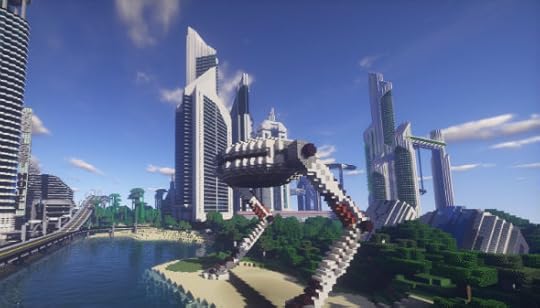
The real question is: when is the Minecraft 2 release date? Unfortunately, there is no Minecraft 2 release date yet, perhaps not ever. But, if our snouts sniff anything out, you will find it here in full.
What is Minecraft 2.0?
Minecraft 2.0 was, interestingly, a thing in 2013. Except, it wasn’t what you were hoping for: Minecraft 2. The problem was that Mojang announced that they had been working on Minecraft 2.0 for two years, bringing “blocky simulation games to the next level” – on April 1, 2013.
For the less keen – or observant – pranksters amongst you, Minecraft 2.0 turned out to be a particularly mean April Fool’s joke. Among the ‘new’ features listed in the changelog for Minecraft 2.0 was a new ‘Super Hostile’ difficulty and an ‘Ultra Realistic’ graphics setting. It even included lapis lazuli blocks that, er, already existed in Minecraft. Stop playing with our feelings Mojang and bring us Minecraft 2!
Minecraft 2 gameplay
Subscribe to PCGamesN on YouTube
The Minecraft 2 gameplay would, naturally, be just as captivating and expansive as the original game. There are no details on Minecraft 2 gameplay yet, but we would expect the usual selection of modes: Survival, Creative, Adventure, Spectator, and Hardcore. If we could come up with new Minecraft 2 modes that would be just as good as the original, we would be a hell of a lot richer, admittedly. So we will just have to keep our fingers crossed for some sweet, sweet Minecraft 2 gameplay.
Minecraft 2 news
There isn’t much Minecraft 2 news around but there was something of a hoo-ha on Apple’s App Store in 2016: a game called Minecraft: Pocket Edition 2. Masquerading as an official Mojang game, Minecraft: Pocket Edition 2 proved anything but.
The scam, which, if downloaded, ended up being little more than an awful isometric swiping game, was taken down pretty sharpish.
This tenuous link is as close as we have come to any information indicating Minecraft 2 being in development. Again, if we hear any more Minecraft 2 news, you know where to find us.
Minecraft 2 wish list
Subscribe to PCGamesN on YouTube
Minecraft might well be a phenomenon, but we have some ideas on how Minecraft 2 could be even better. And, because we are thoughtful souls here at PCGamesN, we have also suggested some of the best Minecraft mods that go some way to making these improvements happen for the original Minecraft. Below you can find what we would like to see from Minecraft 2.
Minecraft 2 improvement: prettier graphics
Minecraft 2, if it ever happens, should look much better than the original. Minecraft 2 will, of course, retain the charm of the current version, but with the spruced-up visuals to make your sharp-edged masterpiece creation look even more striking. Thankfully, there are plenty of Minecraft shaders you can download already to keep you going:
Mod: Continuum Shaders
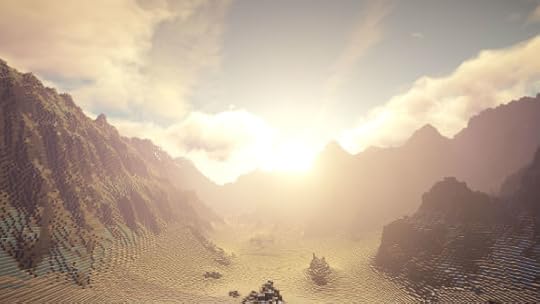
Continuum Shaders is an unofficial add-on to the already-wonderful SEUS Shader Pack – which you don’t need as a prerequisite for this mod to work. Just hit download and pretend Minecraft 2 is here already. It certainly looks like it.
Alternative mod: Ziipzaap’s Shader Pack
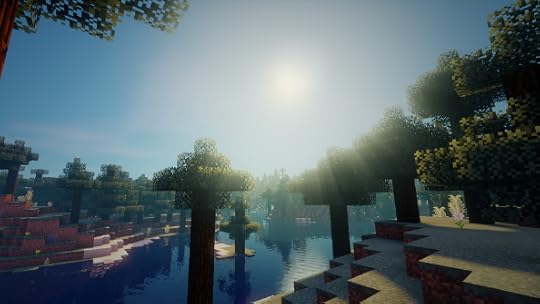
A general graphics boost is one thing, but what about water? Water is one of the toughest things to get right in videogames, but Ziipzaap’s Shader Pack has managed it for Minecraft. You will get a decent lighting boost, too, but we recommend you jump into the drink straight after downloading this Minecraft shader – it will look just like the Minecraft 2 we see in our minds. Just imagine all the Minecraft 2 shaders we could have our greedy mits on in the future.
Minecraft 2 improvement: better UI
Minecraft has been around for so long now you might find that it doesn’t cut it for you any longer. Minecraft 2 would solve this problem with a UI better equipped for mods and new experiences. That said, here are a couple of mods you can use in the meantime:
Mod: Inventory Tweaks
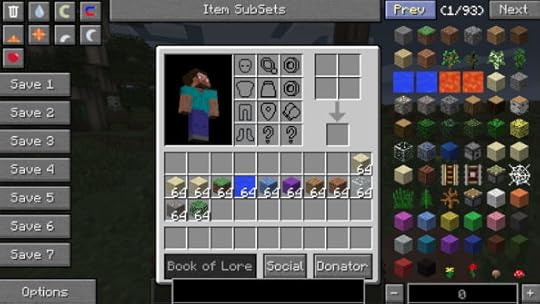
Inventory Tweaks features a raft of quality-of-life fixes we would expect from Minecraft 2. When your stacks of blocks are automatically refilled – and tools that run out of durability – are immediately replaced in your hotbar, you will wonder how you played the game without it.
Alternative mod: WAILA
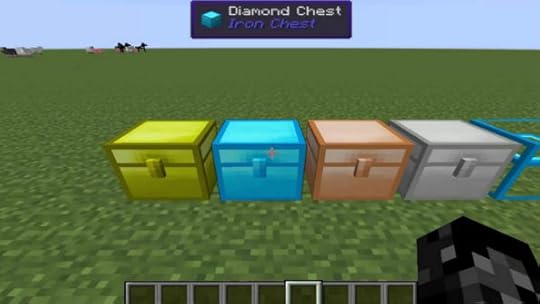
WAILA – “What Am I Looking At” is a great UI tweak. It is hardly the kind of transformative thing we would see from Minecraft 2, but, when you aim your crosshairs at an item and you get a prompt telling you what it is, it proves an immense help.
Minecraft 2 improvement: More creativity
When it comes to human creativity, the possibilities are endless. Well, they would obviously be even more endless in Minecraft 2. Ok, maybe that isn’t possible – here are some Minecraft mods to make you even more creative and ready yourself for Minecraft 2:
Mod: Decocraft
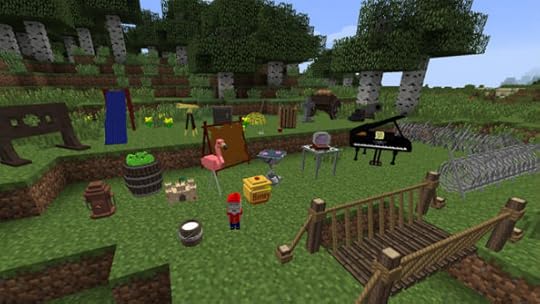
Decocraft is a great way to spruce up your Minecraft home. It adds craftable chairs, tables, bowls, bottles, lamps, stuffed toys, and even a kitchen sink. Get yourself some resources, craft some cool items, and pass the time until Minecraft 2 is a thing.
Alternative mod: Pam’s HarvestCraft
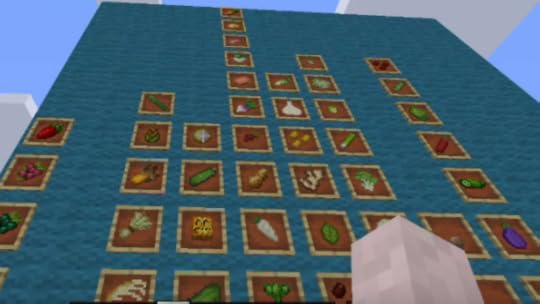
Your home might look great, but that is nothing without some delicious food on your table. Pam’s HarvestCraft adds over 1,100 new foods and items to give you a menu fit for a Minecraft 2 king. The new items include 60 crops, 17 types of fish, tofu for vegans and vegetarians, and 36 fruit-bearing trees, and they will really widen your culinary repertoire.
That is everything we know about Minecraft 2. It isn’t much since it might not even exist but, if we know anything, you will find out all about it here. Let us know what you want to see from Minecraft 2 in the comments below.
Minecraft 2 release date, gameplay, mods, news – everything we know
December 3, 2017
Minecraft’s Super Plus Pack is launching in Spring 2018 with Xbox One X enhancements [Updated]
The Xbox One X already has a few dozen “Enhanced” games, often with 4K resolution, but what about Minecraft?
Update, November 9, 2017: The Microsoft Store previously listed the Super Plus Pack for a December 2017 launch, but since this article went live, the release date has been shifted to Spring 2018. While that doesn’t mean we’ll have to wait until Spring 2018 for the Xbox One X enhancements, at the very least, it looks as though this bundle will come a little later than previously stated. We’ll update you with the latest on the 4K Super Duper Graphics Pack for Xbox One X and the Super Plus Pack bundle as soon as we have more information.
Original article below:
Microsoft announced the Super Duper Graphics Pack back at E3, touting new lighting, water visuals, and 4K resolution for Minecraft on the Xbox One X, but we don’t have a firm launch date as of yet. Instead, what we do have is a new Super Plus Pack, which bundles various Minecraft addons (including 4K enhancements), listed for launch on December 6, 2017.
”
Minecraft Super Plus Pack for Xbox One
Minecraft is a game about placing blocks and going on adventures. Includes Super Duper Graphics Pack and Explorers Pack with Chinese Mythology Mashup, Natural Texture Pack, Biome Settlers Skin Pack, Battle and Beasts Skin Pack, and Campfire Tales Skin Pack. Games play better on Xbox One X.
While this pack doesn’t necessarily mean we’ll have to wait until December to get the update, at the very least, it means it’s the latest date you can expect it to drop.
The Minecraft Super Plus Pack bundle will be available for $39.99 for Xbox One.
Minecraft’s Super Plus Pack is launching in Spring 2018 with Xbox One X enhancements [Updated]
Minecraft’s digital learning platform hits 2 million users, launches new coding tutorial
As Minecraft: Education Edition marks its first anniversary this month, the digital learning platform also celebrates its growing momentum. The company said Tuesday that it had reached over 2 million users in 115 countries and has launched a new coding tutorial.
Minecraft: Education Edition — a member of the Microsoft family — creates an “open sandbox” approach to digital learning by immersing students in an online world where they can collaborate and solve problems.
“Educators are teaching a wide variety of subjects with Minecraft: Education Edition, and we’ve seen particularly exciting results when Minecraft is used to teach computer science,” said Deirdre Quarnstrom, general manager at Minecraft Education, in a statement. “Though many don’t realize it, coding is in fact one of the most creative activities a student can do, building something with no limitations but his or her own creativity.”
To promote coding in schools, Minecraft partnered with Code.org two years ago to offer a free Hour of Code tutorial to students and educators — an effort that has since generated almost 70 million free coding sessions across the globe.
In hopes of building on that success, Minecraft: Education Edition has released a new Minecraft Hour of Code tutorial called Minecraft: Hero’s Journey.
Hero’s Journey features a set of 12 challenges, teaching fundamental coding skills such as loops, debugging and functions.
After completing the free tutorial, students can input the coding they developed into Minecraft: Education Edition to continue learning. They have the option to share their work via text, email or social media to show off new skills.
Minecraft’s digital learning platform hits 2 million users, launches new coding tutorial
December 2, 2017
Drone Builder Nimbatus Could be the Next Minecraft
Nimbatus is the latest in a long line of projects to put the tools of creation into the hands of users. In this case, those tools range from weapons and thrusters to sensors and hinges, with the end goal being to build drones. Players then take those drones on fairly straightforward missions, with success being rewarded with an expansion of the procedurally-generated universe.
The game has been tearing up Kickstarter since the launch of the crowdfunding campaign last month, earning almost three times its initial funding goal with three days remaining at the time of publication. Understanding this overwhelmingly strong reception is simple. The developers at Stray Fawn Studio have made all the right moves in providing a reasonable funding goal, a plethora of work examples, and a playable demo. However, supplanting all of these positives, the game itself speaks volumes in the strength of its ideas and execution.
As with many of the most rewarding gaming experiences, Nimbatus is easy to learn, but difficult to master. Building a player-controlled drone capable of completing objectives is as simple as joining together a series of thrusters, fuel tanks, batteries, and weapons, which can be done in under a minute. The challenge within the game stems from the ever-increasing swarms of enemies, defence against which requires more complex designs that make use of autonomy. To that end, the developers have included a series of sensors that can detect foes and terrain and force the drone to respond accordingly. While the purpose of most parts is fairly straightforward, getting them to work correctly can be a distressingly fiddly process, as adjusting variables can produce unexpected results.
Games such as LittleBigPlanet, Minecraft, Planet Coaster, and Kerbal Space Program have enabled users to flex their creativity and build remarkable things. Nimbatus is designed with a similar mindset, and some crafty gamers have appropriated the existing parts to make speedometers, rovers, and other constructions that the developers have taken as inspiration to guide updates for the alpha build. Community feedback has also guided some of the crowdfunding campaign’s stretch goals, including more parts for land exploration and environmental events. Those additional financial targets promise significant expansions upon the fairly barebones structure of the game found within the demo.
As aforementioned, most missions involve either circumnavigating or drilling through a planet to locate and destroy an objective. While initially invigorating, the repetitive mission structure becomes rote after only a handful of quests. Thankfully, the developers have included challenges in the form of sumo arenas, where autonomous drones go head-to-head in an effort to push each other out of a circle. The technical dexterity and design iteration required for success in these arenas set them apart from the remainder of the game. Building fully autonomous drones is more difficult than player-controlled ones, but also more rewarding. Therefore, Stray Fawn’s decision to expand on this area with drone races and weaponised combat in the final release should prove to be rousing.
The brilliant design philosophy of Nimbatus is supported by a colourful 2D visual style that reduces the complexity of engineering and mechanics to an interface that is easy to understand. Supporting the engaging graphics is a suitably synth-based soundtrack honed to the perfect pitch to facilitate concentration rather than being distracting. The presentation adds up to a project that is stunningly videogenic, as even the most basic creations can put on a spectacular lightshow.
Nimbatus remains in a very early stage of development, and Stray Fawn anticipates not being able to release a final product until 2019, although alpha and Steam Early Access launches are scheduled to take place next year. The barebones mission structure and sometimes obscurely defined autonomy-based drone parts make the wait bearable, but those flaws are minor in the face of the whole game. Nimbatus is simple and engaging enough to be the next Minecraft and is sure to sit comfortably alongside Media Molecule’s Dreams as a new standard bearer for the play, create, share model.
December 1, 2017
The year of BattleTech
BattleTech, the grandfather of mech combat games, turns 34-years old next year. Since 1984, rights to that universe have traded hands several times, from the original creators at FASA Corporation to the current home with three different developers: Piranha Games, Catalyst Game Labs and Harebrained Schemes.
Next year, all three studios will launch new entries of the iconic franchise. For our latest cover story, Polygon talked with each of them, spending nearly a year piecing together four features about the BattleTech universe.
In part one, we traveled to an abandoned mall in Vancouver, British Columbia to lay hands on the first playable demo of MechWarrior 5: Mercenaries. It’s the first single-player, first-person action game to be published in the BattleTech universe in 15 years. You’ll hear from the team about their design goals, and watch the first 10 minutes of gameplay footage released to the public. Check it out below.
In part two, you’ll hear the latest on BattleTech, the third-person tactical strategy game from Harebrained Schemes. After a $2.8 million Kickstarter and a publishing deal with Paradox Interactive, the team of designers opened up about what they’ve learned from the community and how they plan to evoke the kind of ensemble storytelling that made Firefly a cult classic.
In part three, we talked to the BattleTech loremasters and cobbled together the definitive guide to the early history of that universe. It includes more than a millennium’s worth of alternate human history, filled with brilliant innovations and bloody civil wars. And it’s all been helpfully annotated with brand new art from illustrator Daniel Warren Johnson, as well as images culled from the archives at Catalyst Game Labs.
Finally, in part four, we tracked down and interviewed some of the principle creatives involved in the birth of the BattleTech universe. Our feature includes interviews with co-creators Jordan Weisman and L. Ross Babcock, as well as the tabletop game’s current lead designer, Randall Bills.
2018 is shaping up to be the year of BattleTech, so here’s what every MechWarrior needs to know before they drop in.



